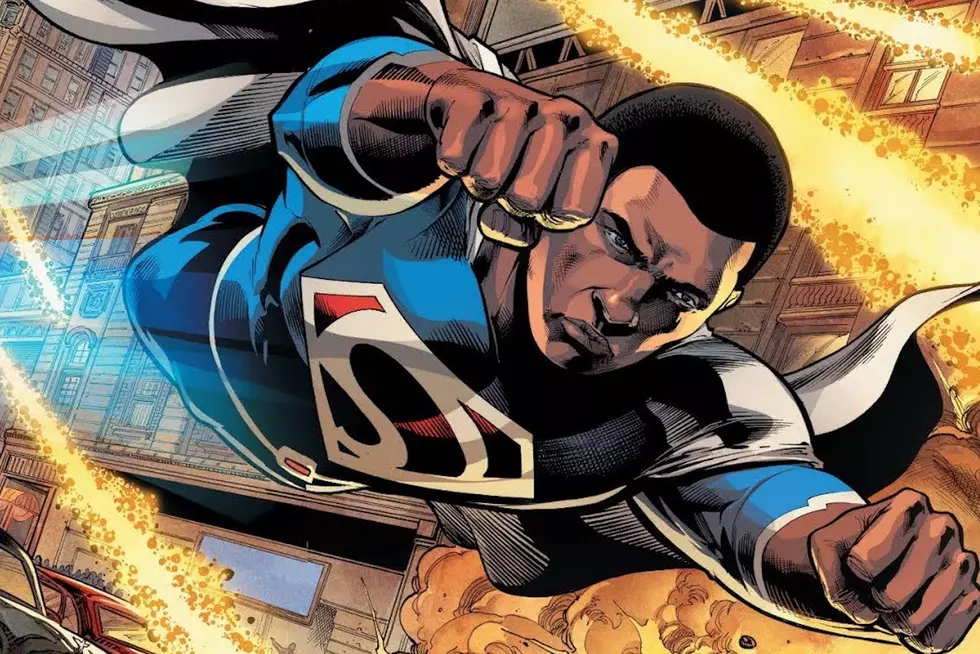
Ask Chris #254: What’s So Great About The Silver Age?
Q: Why was the Silver Age awesome? -- @sackobooks
A: Never before in the history of this column has there been such a complicated, open-ended question that could be answered with a picture of Superman with a lion head. I mean, let's be honest with each other here: That pretty much covers it, and if you can look at Superman, cursed with the head of the most noble of beasts, lamenting about how his girlfriend must forever be condemned to date a lion-man now, and not think that it's at least a little bit awesome, then there's not a whole lot I'm going to be able to tell you to change your mind.
But that doesn't mean that I'm not going to try, and while the lion head is a pretty big part of it, I think a lot of it comes down to the simple idea of seeing how creative people were able to work within some of the tightest - and weirdest - sets of storytelling rules of all time.
So, first things first: When we talk about "The Silver Age," we're not actually talking about all comics printed between October of 1956 and October of 1970. Not really, anyway. It's certainly the catch-all term for that particular time, and a very useful way of distinguishing one era of comics from another, but in terms of that aesthetic that always comes to mind when we hear those words, the strange adventures, the colorful bank-robbing villains, the limitless possibilities of imagination, and the very real limits imposed by the Comics Code, we're really only talking about one thing: DC superhero comics.
And if you want to get really specific about it, we're talking about Superman.
That's not to say that there weren't other comics being published in those years that are worth talking about --- there were, you know, a lot of 'em that ended up being kind of a big deal after 1961, in fact. But even then, there's a huge difference, and you just have to look at them next to each other to see how deep that difference runs.
Grab an issue of Amazing Spider-Man or Fantastic Four from, say 1965, and read it back-to-back with the same month's issue of Action Comics or Batman, and they barely even feel like they're from the same genre, let alone the same year. That's not a judgment on quality, either --- I think I'm pretty firmly on record as being someone who will very happily read the heck out of some Silver Age Superman comics --- but it's about how they were built.
The Marvel books from the '60s are dated, sure, but they feel like they're the prototypes of modern comics: Full-issue stories that tell a continuing narrative where things evolve and change over time, or at least give the illusion of it. The DC books, on the other hand, are shorter stories, eight- and eleven-pagers built around clever hooks rather than soap-operatic drama, where everything comes back to the starting point by the end and you still have room for Cap's Hobby Hints and a PSA about the magic of library cards.
Just to throw another contrast in there, and I promise that this is all going to come together in a few minutes, let's look at Golden Age comics. I've written before about how the single best thing about reading comics from the early '40s is that you can see people who have no idea what they're doing trying to figure out what the rules are in an entirely new medium and, more often than not, failing in pretty spectacularly interesting ways. It's how you end up with stuff like superhero stories that involve kids having their eyes pried out with crowbars that seem completely bonkers in retrospect, because creators are fumbling their way towards genre conventions that didn't exist yet --- and, not coincidentally, how you got one of the greatest characters of all time out of a story that was just straight up ripping off the pre-existing popularity of The Shadow.
Over time, those genre conventions would evolve, and because he was the character who kicked off the entire thing, most of them would form around Superman in one way or another, whether they were taking cues or reacting to them. But at the same time as you had that set of rules evolving naturally from creators figuring out what worked (and editors figuring out what sold), you also had another set of rules that were coming in from outside the stories: The Comics Code.
It's always worth noting that the Comics Code was never actually meant to do the thing that it said it was doing. Even though it was the product of a moral panic about how comics were poisoning children's minds with their lurid violence, the Code was nothing more than a marketing tactic with two primary functions. First, it allowed publishers to bypass (or at least assuage) parental concern by presenting them with an official stamp promising wholesome entertainment free of eye trauma, and second --- and probably more importantly --- it put EC and their extremely popular horror comics out of business.
The thing is, the Code stayed around long after EC was gone, and those rules helped to shape the Silver Age in the same way that the natural evolution of the characters did. Which, at last, brings us back to Superman.
As the '40s became the '50s, creators like Jerry Siegel, Joe Shuster, Otto Binder, Curt Swan and Wayne Boring, had pretty much figured out what Superman's deal was, just as Bill Finger, Sheldon Moldoff, Dick Sprang and others had figured out Batman. They'd realized very quickly that the hook of their character was that he was the most powerful person alive, and as the boom of the Golden Age had continued and everyone had tried to top each other, Superman's powers expanded far beyond the scope of that original building-leaping, shell-bursting power set, even though that had been built around the same idea.
But at the same time, Superman's popularity with children --- and the reaction to the wildly popular Captain Marvel, and the fact that the Comics Code pretty much determined that all superheroes were only for children --- meant that they quickly found themselves being only able to tell one kind of story, and while I honestly doubt that we were ever in danger of a Superman comic that glorified eye trauma, that was still a limitation on the kinds of stuff he had to deal with.
So what did that leave us? You have a character who is portrayed as the most powerful person in the universe and a champion of the common man, but who can't really battle against any actual crime that's more severe than, say, bank robbery. Oh, and he has to be a steadfast moral authority at all times. Oh, and these stories have to be kept simple enough for an audience of children to follow along, but also have to have a tight enough continuity and internal logic to hold up under scrutiny, because it turns out that children love nothing more than obsessing over the details and writing snotty letters about mistakes. And, since readers wouldn't be satisfied with just one story, you have to figure out how to do it in five or six stories every month.
That's a weird set of rules, and it's honestly pretty difficult to imagine having to write stories that would meet those criteria, if only because of how hard it would be to cram all that stuff into an eight-page story with the assumption that a good chunk of the audience might be reading about this character for the first time. But those were the rules, and they shaped those stories.
And somehow, those stories turned out amazing.
That's the thing about the Silver Age: Even though there's a very rigid, very definite set of rules --- a set of rules that you can often see the creators struggling against and doing their damnedest to work around --- those were the only rules. Reading those stories, it seems like everything that wasn't expressly forbidden was fair game, a philosophy that you may recognize as the Air Bud Principle.
Because of that, those stories are this amazing, bizarre blend of completely formulaic and completely unpredictable. You may know exactly how they're going to end --- bad guys defeated, faith in morality rewarded, everything pretty much back to the way that it was when we started --- but you never, ever know how they're going to get there.
Admittedly, it's not perfect. There are a lot of stories that feel like cheats and cop-outs, and if you sit down with a handful of Silver Age Superman comics, I can guarantee that your'e going to get tired of seeing the words "Red Kryptonite" every time something gets a little too weird to fix any other way. And on top of that, you also run into stories where literally every tiny detail of a character is explained...
...but to be honest, those are usually weird enough that it ends up working.
That, more than anything else, is what defines the Silver Age for me, and what makes those stories so fun: That conflict between the limits of the rules and the endless imagination that was used to get around them.
Which mostly just means that sometimes, Superman had a lion head.
Ask Chris art by Erica Henderson. If you’ve got a question you’d like to see Chris tackle in a future column, just send it to @theisb on Twitter with the hashtag #AskChris.
More From ComicsAlliance









